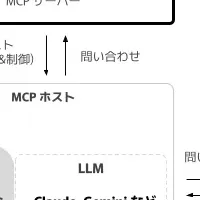
Industrial Automation Market Expected to Surge to USD 570.4 Billion by 2035
A Look at the Future of Industrial Automation
The landscape of the industrial automation market is poised for transformative growth, with estimates suggesting a jump from an initial valuation of USD 200 billion in 2024 to a staggering USD 570.4 billion by 2035. This considerable leap is indicative of the rising influence of Industry 4.0 technologies, allowing manufacturers to enhance operational efficiencies while meeting the demands of a changing global marketplace.
Key Drivers of Market Growth
The rapid evolution of the industrial automation sector can be attributed to several critical factors:
Embracing Industry 4.0 Technologies
Manufacturers around the world are increasingly adopting Industry 4.0 technologies such as IoT, artificial intelligence (AI), and machine learning. This shift is fundamentally reshaping how industries operate, enabling them to address challenges like labor shortages and rising operational costs. For manufacturers, the implementation of IoT-enabled devices and AI-driven predictive maintenance systems enhances productivity while optimizing workflows.
AI Integration and Predictive Maintenance
Artificial Intelligence and machine learning are becoming cornerstone technologies within industrial automation. By harnessing AI for predictive maintenance, companies can analyze patterns in sensor data to foresee machinery failures before they occur. This capability can reduce unplanned downtimes by up to 40%, translating into significant cost savings and operational efficiency.
Government Initiatives Supporting Automation
Government initiatives are also playing a pivotal role in accelerating automation adoption. Programs like Germany's Industrie 4.0, China’s Made in China 2025, and the U.S. Advanced Manufacturing Partnership are providing essential support through funding and resources. Such backing aims to make the transition to automation financially viable for manufacturers, particularly small to medium-sized enterprises (SMEs).
Categorizing Market Segmentation
The industrial automation market can be strategically segmented into various categories:
- - Solutions: The solutions segment, which includes software and services like ERP and SCADA systems, is expected to dominate the market. This is largely due to the growing need for data analytics and optimization strategies in production processes.
- - Modes of Automation: Semi-automatic systems will have the largest market share owing to more flexible manufacturing processes. However, fully automatic systems are anticipated to grow faster as demand for complete automation solutions rises.
- - End-Use Industries: The oil and gas sector is projected to lead in market share, driven by the need for automation in process optimization and predictive maintenance. The automotive industry is anticipated to grow rapidly, propelled by advancements in smart manufacturing and robotics.
Regional Insights
The Asia-Pacific region is expected to emerge as a dominant force in the industrial automation market. This growth is fueled by extensive industrialization, governmental backing for smart manufacturing, and significant investments in technology. Countries like China, India, and South Korea are at the forefront, investing heavily to incorporate AI and robotics into their manufacturing systems.
Meanwhile, North America remains a significant market owing to its advanced technological infrastructure and substantial research investments in automation technologies.
Future Innovations
Looking ahead, the focus will likely shift towards leveraging digital twin technology and edge computing. These innovations allow for faster data processing, which is crucial for real-time automation control. Additionally, the rise of 5G technology is expected to streamline operations further, enabling ultra-responsive connections between machines.
Conclusion
In conclusion, the industrial automation market is on the brink of a monumental shift, with technologies like AI, IoT, and Industry 4.0 reshaping how industries operate. The anticipatory growth from USD 200 billion in 2024 to USD 570.4 billion by 2035 is not just a projection; it is a clear indicator of the future trajectory of manufacturing practices across the globe. As businesses increasingly prioritize operational efficiency and sustainability, the automation landscape will undoubtedly evolve, promising exciting times ahead for industries worldwide.
Topics Business Technology)










【About Using Articles】
You can freely use the title and article content by linking to the page where the article is posted.
※ Images cannot be used.
【About Links】
Links are free to use.